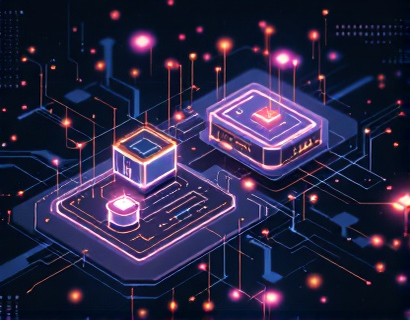Advanced Telecom and Internet Solutions: Elevating Connectivity and Communication for Modern Businesses and Individuals
The rapid evolution of telecommunications and internet technologies has revolutionized the way businesses and individuals connect and communicate. The demand for high-speed, reliable, and secure connectivity has never been greater, driven by the digital transformation across various sectors. This article delves into the transformative impact of advanced telecommunications and internet services, highlighting how cutting-edge infrastructure and specialized software solutions are enhancing connectivity and communication. By focusing on quality and customer satisfaction, these advancements ensure that users can access essential digital services efficiently and reliably, empowering them to succeed in the modern digital landscape.
Modern telecommunications infrastructure forms the backbone of digital connectivity. The transition from traditional copper-based networks to fiber-optic technology has been pivotal in achieving higher data transmission rates and lower latency. Fiber-optic cables, composed of thin glass or plastic fibers, can carry vast amounts of data over long distances without significant signal degradation. This technology enables internet speeds that are several times faster than previous generations, supporting high-bandwidth applications such as 4K streaming, virtual reality, and cloud computing.
Beyond fiber optics, the deployment of 5G networks represents a significant leap forward in mobile connectivity. 5G technology offers unprecedented speed, capacity, and reliability, with the potential to support up to 1 million devices per square kilometer. This capability is crucial for the Internet of Things (IoT), where numerous devices need to communicate seamlessly. The low latency and high reliability of 5G make it ideal for applications like autonomous vehicles, smart cities, and real-time data analytics, which require instantaneous communication and processing.
In addition to infrastructure improvements, specialized software solutions play a vital role in enhancing connectivity and communication. Network management tools, for instance, provide comprehensive oversight and control over network operations. These tools enable real-time monitoring, automated troubleshooting, and proactive maintenance, ensuring minimal downtime and optimal performance. Advanced routing algorithms and traffic management systems optimize data flow, reducing congestion and improving overall network efficiency.
Security is another critical aspect of modern telecommunications and internet services. With the increasing number of cyber threats, robust security measures are essential to protect sensitive data and maintain user trust. End-to-end encryption, multi-factor authentication, and intrusion detection systems are just a few of the security technologies employed to safeguard networks. Additionally, compliance with international standards such as GDPR and HIPAA ensures that data privacy and integrity are maintained across all services.
The integration of artificial intelligence (AI) and machine learning (ML) into telecommunications and internet services has opened new possibilities for enhancing user experience. AI-driven analytics can predict network issues before they occur, allowing for preemptive action. Personalized services, such as content recommendations and customized user interfaces, are made possible through ML algorithms that learn from user behavior. These technologies not only improve efficiency but also create more intuitive and user-friendly digital environments.
For businesses, advanced telecommunications and internet solutions are indispensable for maintaining a competitive edge. High-speed internet connectivity is crucial for remote work, enabling teams to collaborate effectively regardless of their physical location. Cloud computing services provide scalable and flexible infrastructure, allowing businesses to manage resources efficiently and reduce operational costs. Video conferencing tools have become essential for face-to-face communication, bridging the gap created by physical distances.
In the realm of e-commerce, fast and reliable internet connectivity is a must. Online retailers rely on seamless user experiences to drive sales and customer satisfaction. Advanced load balancing and content delivery networks (CDNs) ensure that websites load quickly, even during peak traffic periods. Secure payment gateways and robust data analytics tools help businesses manage transactions and customer insights effectively, fostering trust and loyalty.
For individuals, the benefits of advanced telecommunications and internet services are equally significant. Home broadband connections enable access to a wealth of online resources, from educational content to entertainment platforms. Smart home devices, powered by reliable internet connectivity, enhance convenience and security in daily life. Telemedicine services, made possible by high-quality video streaming, provide access to healthcare professionals regardless of geographic location, improving health outcomes and accessibility.
The deployment of broadband in rural and underserved areas is a critical challenge that needs to be addressed. Governments and private sector partners are investing in initiatives to extend internet coverage to these regions, recognizing the economic and social benefits of digital inclusion. Satellite internet and fixed wireless technologies are among the solutions being explored to bridge the digital divide, ensuring that everyone has access to the digital world.
In the educational sector, advanced telecommunications infrastructure supports innovative learning methods. Online learning platforms and virtual classrooms leverage high-speed internet to deliver high-quality educational content to students worldwide. Interactive tools and real-time collaboration features enhance the learning experience, making education more engaging and accessible. For institutions, reliable connectivity ensures that students and faculty can access research resources, participate in virtual conferences, and engage in global academic communities.
The healthcare industry is another sector that greatly benefits from advanced telecommunications and internet solutions. Telehealth services, enabled by stable and secure connections, allow patients to consult with healthcare providers remotely, reducing the need for in-person visits and improving access to care. Electronic health records (EHRs) and remote monitoring devices rely on robust network infrastructure to ensure timely and accurate data transmission, enhancing patient care and operational efficiency.
In the financial sector, the reliability and security of telecommunications and internet services are paramount. High-speed connections support real-time trading and data analysis, giving financial institutions a competitive advantage. Secure communication channels protect sensitive financial transactions and customer information, maintaining trust and compliance with regulatory requirements. Advanced fraud detection systems, powered by AI and ML, help identify and prevent unauthorized activities, safeguarding both institutions and their clients.
As the demand for advanced telecommunications and internet services continues to grow, ongoing innovation and investment are essential. Network operators and technology providers must collaborate to develop and deploy next-generation solutions that meet the evolving needs of businesses and individuals. Research and development in areas such as quantum communication, edge computing, and advanced wireless technologies will further push the boundaries of what is possible, ensuring that connectivity and communication remain at the forefront of digital advancement.
In conclusion, the transformative impact of advanced telecommunications and internet services cannot be overstated. By providing high-quality, reliable, and secure connectivity, these solutions empower businesses to innovate and grow, and individuals to connect and learn. As technology continues to evolve, the focus on enhancing digital infrastructure and software solutions will remain crucial in shaping a connected and prosperous future.










































